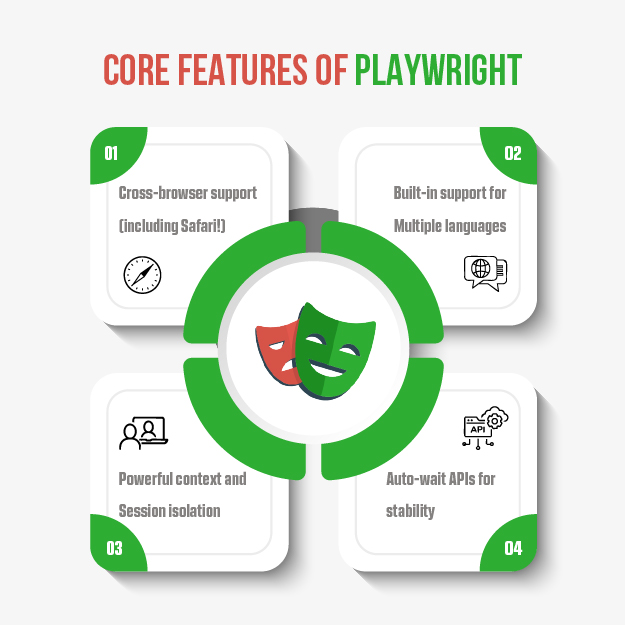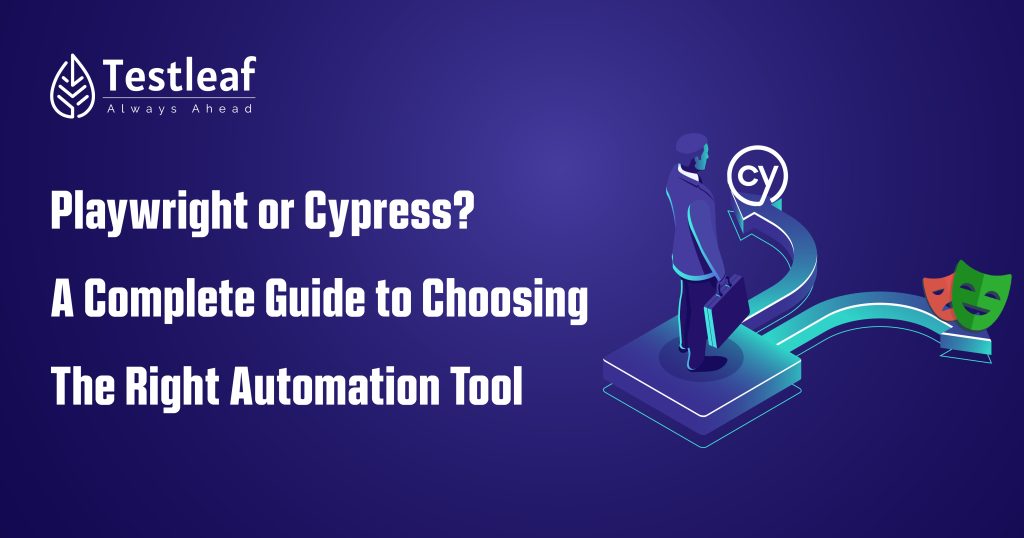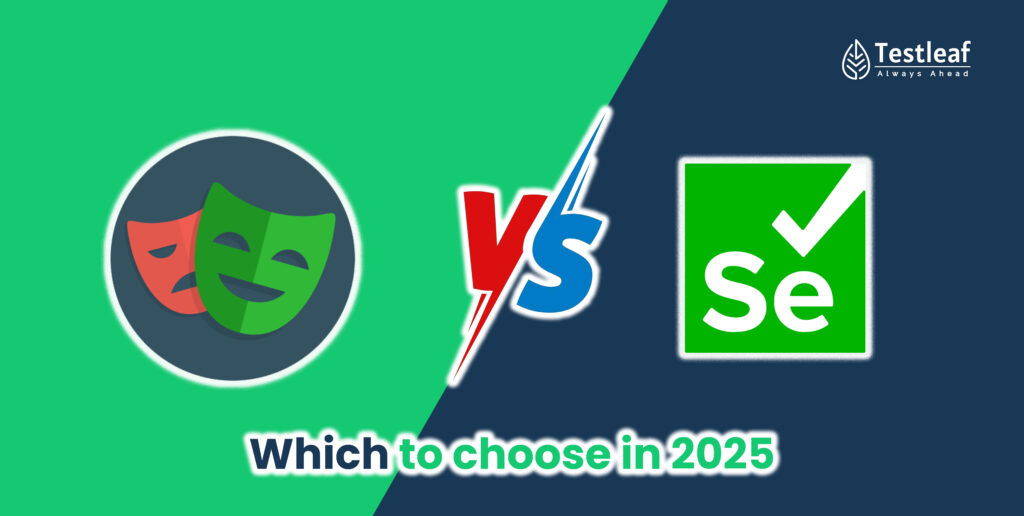Introduction
The rise of modern test automation tools
Testing is no longer just a checkbox at the end of development—it’s an integral part of the dev cycle. With the surge of web applications, choosing the right automation tool isn’t just about testing functionality. It’s about performance, scalability, developer experience, and ecosystem.
Why this guide matters
Whether you’re a QA engineer, a developer, or a tech lead making strategic decisions, this guide will walk you through every critical difference between Cypress and Playwright, helping you pick the right tool with confidence.
What is Cypress?
Brief history and overview
Cypress is a next-gen front-end testing tool built specifically for the modern web. Launched in 2015, it revolutionized how we think about UI testing with its real-time reloading and time-travel features.
Key features of Cypress
- Runs in the browser (Chrome-based by default)
- Time-travel debugging
- Automatic waiting (no need for manual sleep or wait)
- Snapshot comparisons
- Easy to install with minimal config
Popular Articles: infosys interview questions for automation testing
Ideal use cases
- Testing React, Angular, or Vue apps
- Fast feedback during development
- Tight integration with Mocha and Chai
What is Playwright?
Background and development
Playwright is a powerful open-source framework developed by Microsoft. It offers cross-browser automation with support for Chromium, Firefox, and WebKit.
Core features of Playwright
- Cross-browser support (including Safari!)
- Built-in support for multiple languages
- Powerful context and session isolation
- Auto-wait APIs for stability
- Headless and headed testing out of the box

When to use Playwright
- Need to test across multiple browsers and devices
- Testing under different user permissions or scenarios
- Automating interactions on mobile emulators
Installation and Setup
Installing Cypress step-by-step
bash
CopyEdit
npm install cypress –save-dev
npx cypress open
That’s it. Cypress auto-configures everything.
Installing Playwright step-by-step
bash
CopyEdit
npm install -D @playwright/test
npx playwright install
Also simple, but it installs browser binaries, which can take more time.
System Requirements Comparison
| Feature | Cypress | Playwright |
| OS Compatibility | All major OS | All major OS |
| Browser binaries | Not required | Required |
| Install time | Faster | Slightly longer |
Browser Support
Cross-browser testing with Cypress
Cypress officially supports:
- Chrome
- Edge
- Electron
(Firefox is in beta)
Browser compatibility with Playwright
Playwright supports:
- Chromium
- Firefox
- WebKit
(Yes, Safari too!)
Headless vs. headed execution
Both tools support headless mode, but Playwright offers better control and faster startup times in headless environments.
Testing Capabilities
End-to-end testing
Both tools shine here, but Cypress lacks native multi-tab testing (at least at the time of writing), while Playwright handles it well.
Component and integration testing
Cypress introduced component testing for frameworks like React and Vue, whereas Playwright focuses more on full-page interactions.
API testing support
Cypress provides built-in commands like cy.request(), while Playwright uses APIRequestContext, giving more flexibility and advanced controls.
Language and Framework Support
JavaScript, TypeScript compatibility
Both tools support JS/TS natively. However, Playwright also offers bindings in:
- Python
- Java
- .NET
Cypress is strictly JavaScript (for now).
Other language support differences
Playwright is ideal for polyglot teams, especially in enterprise environments where multiple languages coexist.
Discover how you can upskill faster with 7 Key Benefits of Enrolling in an Online Playwright Automation Course.
Parallel Execution and Performance
How Cypress handles parallelism
Cypress Cloud (paid) offers parallel test execution and analytics. On open-source, it’s limited unless manually configured.
How Playwright manages speed and concurrency
Playwright is blazing fast and supports:
- Test sharding
- Parallel workers
- Browser context reuse
…all with native support.
Debugging and Developer Tools
Debugging in Cypress
- Time-travel snapshots
- DevTools integration
- Detailed logs
Playwright’s debugging experience
- Codegen tool to record tests
- VS Code integration
- Trace viewer for test recording and playback
CI/CD Integration
Cypress and CI pipelines
- Easily integrates with GitHub Actions, GitLab, Jenkins
- Cypress Dashboard adds more visibility (premium)
Playwright in DevOps pipelines
- Lightweight CLI tools
- Easy integration with Docker, Azure Pipelines, GitHub Actions
Community and Ecosystem
Cypress community support and plugins
- Vibrant GitHub community
- Tons of third-party plugins
- Rich documentation and examples
Playwright’s growing ecosystem
- Backed by Microsoft
- Fewer plugins but faster evolution
- Great official docs
Explore Similar Topics: Playwright automation in modern web testing
Learning Curve and Documentation
Beginner-friendliness
Cypress has a smoother onboarding experience. Its GUI and in-browser view help beginners understand what’s happening.
Resources and learning materials
Both tools have official docs, but Cypress also has tons of community tutorials, YouTube videos, and plugins.
Pros and Cons
Cypress – Advantages and Disadvantages
Pros:
- Easy setup and use
- Time-travel debugging
- Strong UI and community
Cons:
- Limited browser support
- No native multi-tab or multi-domain testing
Playwright – Advantages and Disadvantages
Pros:
- Cross-browser and multi-language support
- Fast execution and automation power
- Advanced testing features
Cons:
- Slightly steeper learning curve
- Less community support (currently)
Final Verdict: Which One Should You Choose?
Decision-making based on project type
- Use Cypress if you’re building a modern SPA with React or Vue and need tight feedback loops during dev.
- Use Playwright if you’re focused on enterprise apps, need full browser support, or want powerful automation with multi-user scenarios.
Tool fit based on team size, skill, and scope
Small team? Go with Cypress.
Enterprise setup or need for mobile Safari testing? Playwright is your friend.
Conclusion
At the end of the day, Cypress and Playwright are both stellar tools. Each has its strengths, and your decision should align with your testing goals, team structure, and app complexity. If you’re starting out, give both a spin—you might be surprised which one clicks best with your workflow. And if you’d like to deepen your hands-on skills, consider taking a Playwright course online to explore real-world testing scenarios more effectively.
We Also Provide Training In:
- Advanced Selenium Training
- Playwright Training
- Gen AI Training
- AWS Training
- REST API Training
- Full Stack Training
- Appium Training
- DevOps Training
- JMeter Performance Training
Author’s Bio:

As CEO of TestLeaf, I’m dedicated to transforming software testing by empowering individuals with real-world skills and advanced technology. With 24+ years in software engineering, I lead our mission to shape local talent into global software professionals. Join us in redefining the future of test engineering and making a lasting impact in the tech world.
Babu Manickam
CEO – Testleaf









